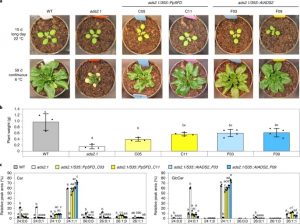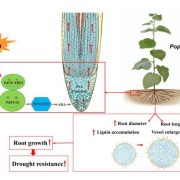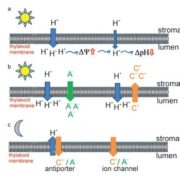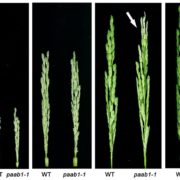Convergence of sphingolipid desaturation across over 500 million years of plant evolution (Nature Plants)
 If you remember your biochemistry, lipids that are saturated (without double bonds) pack more tightly and therefore have a higher melting temperature than those that are unsaturated, therefore bend and pack less tightly (think of margarine versus oil). Plants can modify their membranes in a temperature-responsive way to maintain a consistent degree of fluidity. Resemann et al. addressed this in the model moss Physcomitrium patens. Previously they had identified a cold-induced desaturase, but when they knocked-out this gene they did not see any cold-sensitive phenotype. However, they undertook a lipidomics study of related mutants and identified abnormalities in very-long chain fatty acids that were exacerbated by cold treatment; some of the mutants showed a cold-sensitive phenotype that was rescued by an Arabidopsis desaturase gene. Interestingly, this gene clearly has a distinct evolutionary origin from the moss gene, suggesting a convergence of function. The authors speculate that the loss of vegetative desiccation tolerance in vascular plants may be reflected by their differences in lipid composition from the more resilient mosses. (Summary by Mary Williams @PlantTeaching). Nature Plants 10.1038/s41477-020-00844-3
If you remember your biochemistry, lipids that are saturated (without double bonds) pack more tightly and therefore have a higher melting temperature than those that are unsaturated, therefore bend and pack less tightly (think of margarine versus oil). Plants can modify their membranes in a temperature-responsive way to maintain a consistent degree of fluidity. Resemann et al. addressed this in the model moss Physcomitrium patens. Previously they had identified a cold-induced desaturase, but when they knocked-out this gene they did not see any cold-sensitive phenotype. However, they undertook a lipidomics study of related mutants and identified abnormalities in very-long chain fatty acids that were exacerbated by cold treatment; some of the mutants showed a cold-sensitive phenotype that was rescued by an Arabidopsis desaturase gene. Interestingly, this gene clearly has a distinct evolutionary origin from the moss gene, suggesting a convergence of function. The authors speculate that the loss of vegetative desiccation tolerance in vascular plants may be reflected by their differences in lipid composition from the more resilient mosses. (Summary by Mary Williams @PlantTeaching). Nature Plants 10.1038/s41477-020-00844-3









